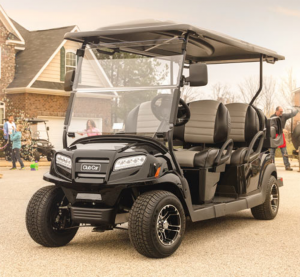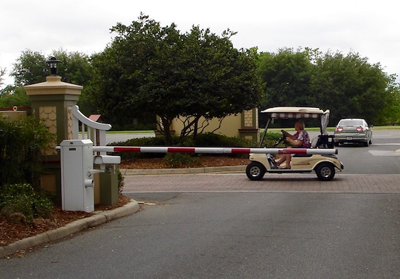Things Are Coming Together to Put PTVs on Public Roads in Greater Numbers
In the coming months and years we are likely to see the personal transportation vehicle become a mainstream mode of travel. Not on major highways, to be sure, or high-speed corridors between towns and villages. But the most densely trafficked roads in neighborhoods and in most areas are not in that category.
The question may be asked, “Can PTVs find a market outside of gated or planned communities or municipalities that have specifically made provision for their use?” OK, lets take as a test case, a densely populated borough of Queens, one of the five boroughs of New York City. Most of the residential homes in this borough were built during the late 1920s and throughout the Thirties. These homes are bunched together on small lots barely larger than the foundations of the homes that rest upon them. While they could be characterized as Archie Bunker’s dream habitat, in reality they are not the apple of a modern-day architect’s vision of home and hearth.
Nonetheless, people do live in them—as a matter of fact, quite a lot of people. (Census Bureau estimates about 2.28 million souls.) And it happens that these neighborhoods feature mostly two-story homes with garages and off street parking. So, PTVs can rest within the residential property, or close-by on the street.
Why pick Queens?
Why pick Queens? I believe it was Frank Sinatra who coined the phrase, “If you can make it New York, you can make it anywhere.” So, if PTVs can find a home in Queens, they should make it virtually everywhere else on the planet.
Most importantly for PTVs, in Queens the neighborhood bodega or Gestede’s (a supermarket chain) are usually down the block or around the corner, easily accessible on low-speed streets (speed limit 35 mph). Parking at the destination might be a problem, but most of the establishments have a small parking lot, and there is curbside space.

One drawback to Queens, as opposed to, say, South Florida, is the seasonal cold weather. Northerners are used to bundling-up with heavy clothing against low temperatures, so the typical open driver/passenger compartment may be tolerable. More likely, however, will be cab enclosures that are of hard materials with solid frames and tight closing doors. Such enclosures will allow the cabs to be heated, and in the summer, air-conditioned.
So, look for the PTV to be robust against the elements, convenient, and cost-effective. But, will
PTVs actually be allowed on the streets of Queens? Let’s look at the law, first at the State level.
The “law”
The New York State DMV gives this guidance with regard to “other motorized devices…”, meaning vehicles not including motorized bikes and electric scooters:
“You cannot register or operate any of the motorized devices from the list below on any street, highway, parking lot, sidewalk or other area in New York State that allows public motor vehicle traffic. You may be arrested if you do.” And appearing in the list below is the following:
“Golf Cart (also referred to as Golf Car or Neighborhood Electric Vehicle) – a small motorized device with four wheels designed to carry people.” So, PTVs are out? Not so fast. In the very same paragraph, without skipping a beat, is the next sentence (a reprieve):
“Many low speed vehicles are similar in appearance to a golf cart, and can be registered and driven on New York State highways.” (Emphasis added.)
Local law prevails
While State law might set the general legal guidelines, local regulations ultimately prevails to determine what types of vehicles can be used on public roads and streets. There is considerable evidence that local officials across the country are grappling with new forms of personal mobility. Much of the focus on the local level so far has been on electric bikes and scooters—but not exclusively. Many communities are adapting to the “…small motorized device with four wheels designed to carry people…”, to use the NYS DMV’s description.

The need to provide for local use of PTVs is often the result of the fact that, legal or not, people are using PTVs on public roads. In other words, the early adapters are growing in number, which, in turn, has put PTV use beyond the golf course and gated community at the top of the agenda for local transportation officials.
Things are coming together to foster growth
What local officials are looking at is not the old fashioned golf cart with no lights, drum brakes on the rear wheels, and a rack for golf bags on the back. What they are now seeing is a stylish, lithium battery-driven, high-performing mode of transportation. This new generation of small motorized devices with four wheels designed to carry people feature:
• Four-wheel hydraulic disk brakes;
• LED lighting kits;
• Self-correcting turn signals;
• Electric power steering;
• Three-point seat belts—and proactive safety features coming over the next few years—Advanced Driving Assistance Systems;
• Non-polluting AC electric motors;
• Low maintenance lithium batteries affording greater driving distance;
• Independent front and rear suspension;
• Sophisticated Bluetooh audio systems and other automotive features.
So much for the small motorized device.
Other factors driving the market
Product upgrades have certainly caught the eye of consumers, but some fundamental changes in society are also driving the market for PTVs. These changes include:
• Remote office access which significantly reduces the need for commuting and dependence on a conventional automobile;
• Next day delivery services again reducing the need for frequent trips to the supermarket, and which facilitates acquisition of office supplies—thus complementing the remote office workstyle;
• Evidence that consumers see the PTV as a viable, and desirable, alternative to the conventional automobile for short distance driving—a change in consumer perceptions from the old style “golf cart”;
• Currently, the high prices of gasoline will drive more use and dependence on the economical and easily, overnight rechargeable PTV.
Contact the Author: Steve Metzger at smetzger@smallvehicleresource.com. Or check out our website at www.smallvehicleresource.com, where you will find an extensive database of vehicle models and can make side-by-side comparisons of vehicles based on a full set of specifications.



